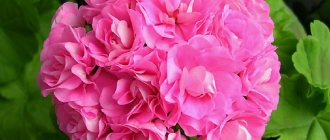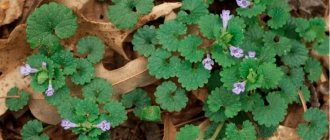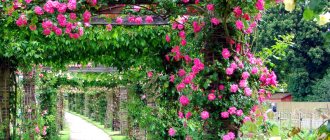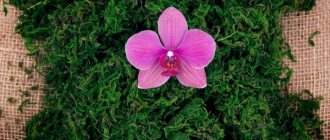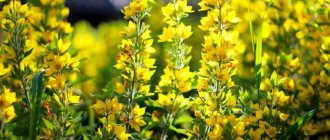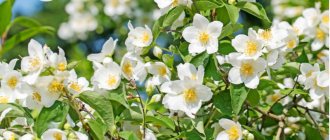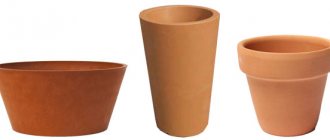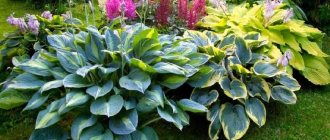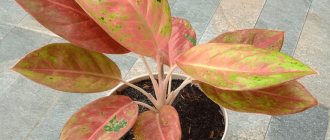Nature has created an innumerable number of different plants. Moreover, in the natural environment there is no dissonance in the combination of different neighboring cultures. With a good imagination, you can take a lot from the wild to create a paradise on your property. For example, hostas in the garden and landscape tricks for growing flowers are of great interest in the design of a flower plot. The use of hosta in garden landscape design when decorating flower beds has many options. The abundance of varieties and types of this crop (about 50 species and more than 700 varieties) will help you create absolutely charming compositions.
Basic rules of landscape design
Without going into the complexity of the design, you can note some quite understandable rules for yourself. They consist of:
- Unity of style. This means that both the buildings on the site and the flower beds must be in the same style. If you want to grow a garden in some kind of national setting, then the entire landscape will have to be adapted to this type, that is, buildings and fences will have to be camouflaged, and harmonious plants will have to be chosen.
- Simplicity of design. This is not a matter of boringness, but of the dosage of details of the future garden. A small area loaded with unnecessary decoration causes anxiety and a feeling of lack of taste in the creator of the composition.
- Dominance and submission. One prominent plant is selected as the basis of the future flower garden, and all the others are selected to match it. The goal is to obtain a single composition, where each plant is designed to highlight the beauty of the main element.
Therefore, even before creating a garden, it is worth choosing the right plants and decorative details that match them (figurines, borders, tiles for paths, lanterns, fountains).
Important! You can choose any component of the composition as the main element, including decorative elements.
Geometry in creating a flower garden
Hosta diseases
The design solutions are complemented by the use of geometric shapes when planning a flower garden. Depending on the task at hand, the size and shape of the site, and its location, the following are used:
- Triangle rule. In simple terms, this means that tall plants, for example, trees, are planted first, then lower bushes and then flowers. The shades of foliage from high to low also change from dense green to light green, light green and yellow. Moreover, each group is planted in a triangular shape.
- Rule of the circle. The circle helps distribute the color and light spectrum in the area. It can be divided into 2 or more parts and plants with related shades of flowers (leaves) can be planted in each of them. Just follow the rule of 3 colors, 3 sizes and 3 shapes.
- Rule of the square. It is based on the cardinal directions and involves planting plants according to size and content characteristics.
Reproduction methods
Hostas reproduce in different ways:
- seeds;
- cuttings;
- dividing the bush
Propagation by seeds
This option is used quite rarely by experienced gardeners. This is explained by the fact that seed propagation of the shrub occurs very slowly. Seedlings from seeds take a long time to germinate and have very poor germination. But such bushes achieve decorative value only after 2-3 years.
Reproduction by dividing the bush
But dividing the bush when propagating hostas is the most popular option. The seating procedure is carried out at the beginning of May or at the end of September. It is necessary to divide the bush carefully and into several parts using sharp garden scissors. It is worth remembering that the smaller the division, the longer it will take to grow.
How to beautifully plant hostas at your summer cottage or in the garden
Transplanting hostas to another place in the summer
To use a plant in the landscape, before breeding, you need to choose a permanent place for it and decide what to plant next to the hosta. It is not advisable to replant the crop. It is recommended to renew plantings after 6-10 years.
For your information! Hosta is capable of forming a dense green cover at the planting site in 2 years.
The place should be shady, calm with slightly acidic, moist soil. For lush growth, you should immediately pinch the emerging peduncle. The beauty of the hosta is in the leaves, and the flowers are rather inconspicuous, so you can do without flowering.
Handsome host at the dacha
It is important to keep in mind when planting that every year the plant will become more luxuriant, which means it will need good space around it.
Choosing a site for planting
You can grow hostas in the garden either in the center of the plot or in the background. Just take into account what plants the hosts are combined with. Based on the shade of the leaves, neighboring flowers are selected. For example, blue will look stylish with white, yellow with red, and other shades with green.
Important! If you have any doubts about choosing a place, you can try planting them in different areas and observe where they grow best. This place can be chosen as a permanent one for the next season.
With the arrival of autumn, the leaves of the plant are not cut off. The bush under the snow will serve as a shelter for the root system. Clearing of leaves is carried out in the spring.
What varieties are considered decorative?
Lush “pillows”, as if woven from dove, blue and golden leaves, can bring extraordinary colors to the garden’s palette.
Perhaps the most common variety, which has long taken root in suburban areas, is hosta plantain. The plant, decorated with large light green leaves, is capable of forming “pillows” 60-80 cm high
Breeders never cease to amaze, creating new varieties that amaze with the contrast of shades and texture of foliage. Two and even three-colored hostas are the most decorative.
Recent Entries
Lilac perennials that are beautiful, compact and do not crowd out other plants Why when buying seedlings you should not take the sellers’ word for it and how to determine the age of the plant using 3 signs Tomato seedlings have turned purple or whitish: why the color has changed and how to save the plants
'Whirlwind' with white leaves edged with an apple-green outline is a striking representative of the tricolor varieties of perennial beauties
The 'Striptease' variety looks no less impressive, decorated with an elegant whitish stripe breaking through the center of the leaf through a rich, wide dark green border.
One of the latest trends in hosta breeding is the creation of varieties with a wavy edge of the leaf blade.
The varieties 'Medusa', decorated with a clump of green-yellow foliage, and 'Hadspen Heron' with bright green fan-shaped leaves have a special charm.
A feature of varietal plants is their slow mass growth. Such hosts acquire sufficient decorativeness only at the age of 4-5, and are able to fully demonstrate their beauty only at the age of 8-10 years. Gradually, from year to year, forming larger and larger leaves, which acquire the color and shape characteristic of the variety, small, inconspicuous bushes turn into real “queens of the flower garden.”
Hosta on an alpine hill
Hosta types
The basic varieties of the crop are quite large. They are not very suitable for alpine slides. But through the efforts of breeders, dwarf plant species have been bred. In addition, some of their properties have been improved. For example, resistance to sunburn, decorativeness of flowers.
New host hybrids
About 20 such hybrids have been obtained. The most spectacular of them are:
- Venus is a plant with small, shiny, heart-shaped leaves;
- Shining Tot features beautiful pale lilac flowers;
- Variegata - comes from Japan, has beige leaves with light green and green borders;
- longissima Maekawa has narrow emerald leaves with a frilly edge;
- Ground Master has narrow and long leaves, which are framed by a yellow stripe, and a very dense root system. It can be planted to strengthen the soil on the shore of a reservoir;
- Kabitan A distinctive feature of the species is lanceolate, folded leaves with a light green center and a dense green stripe along the edge.
Hosta green plantain Venus
The hosts Lemon Lime, Vanilla Cream and Geisha also look amazing. They are all yellow shades.
Dwarf hostas
Of the dwarf blues, the following are in great demand:
- Blue Cadet;
- Blue Moon;
- Elegans.
If it is impossible to acquire dwarf forms, it is quite possible to get by with basic varieties. On an alpine hill in the sun, their leaves will be smaller than in the shade.
Important! Hybrid varieties grow more slowly than basic varieties.
Still, in rock gardens, hosts are recommended to be placed in the shade of stones or other plants. In any case, they should not be planted at the top; it is worth choosing a place at the foot of the hill. It’s even better if the flower garden approaches the pond.
Soil preparation
Small deviations in soil composition from the ideal are unlikely to noticeably affect the appearance. Hostas are fairly unpretentious plants. But there are some recommendations from experienced gardeners:
- The composition of the soil is light loam, neutral, slightly alkaline or slightly acidic. Nutritious and well-drained soil. It is important to maintain moist soil, but at the same time avoid stagnation of water; it is better not to plant a swamp.
- It is advisable to add moisture retainers to sandy soil - peat, humus, compost. It will not be superfluous to mulch the plantings.
- Clay soil is diluted with fine gravel, organic matter with coarse fiber, and good drainage is provided.
- Avoid alkalizing the soil. Apply acidic peat and neutralize the alkali using other means. Yellowing leaves and loss of brightness will indicate that the plant needs acidification.
- On the unflooded shore of a reservoir, most hosta varieties reveal all their beauty. Increased humidity promotes the development of decorative foliage and helps to gain strength faster.
Why does hosta change leaf color?
The change in leaf color in many hosta species is genetic. Under any conditions, they will change color during the growing season. Shades can vary from white to blue. But their change can also occur due to climatic conditions or violation of maintenance rules. Changing species can be divided into:
- viridescent is when any initial spring foliage color changes to deep green by the end of the season;
- lucent - these leaves change color from the original light yellow (yellow, variegated) to dark yellow;
- albescent - hosta leaves change from yellow, light green and green in spring to white in autumn;
- fluorescent - the change in shades goes from blue to green, and the transformation occurs already in the middle of the season.
Chameleon hosts
There are hostas with permanent color that retain the original color of the leaves all summer.
Along the walls of the house
Often, hosts are used to disguise not the most beautiful parts of the building, for example, the bottom of a wall, blind area or gutter. In this case, they are planted in front of the masked elements, as close to them as possible. Giant species of hosta, whose height reaches or even exceeds 70 cm, are best suited for these purposes.
Important! Sometimes such aspirations for beauty lead to violations of building codes, for example, to a narrowing of the blind area. This cannot be done! Beauty is, of course, important, but these standards are not written just like that.
Flower garden with hostas
Once you use hostas in your garden design, you can admire the lush, beautiful bushes for many years. They will decorate flower beds even when other flowers have not bloomed. Moreover, their care is minimal.
Flowerbed with hostas and perennial flowers
Traditionally, hostas are planted with perennials such as:
- bergenia;
- hellebore;
- day-lily.
Closer to the pond, the following are added to the flowerbed:
- marsh iris;
- anemone;
- lungwort.
Distribution of plants depending on height
Dwarf hosta varieties are planted around evergreen coniferous bushes, and a tall variety looks beautiful alone against the backdrop of a tall tree, near ponds, in the last row of mixborders.
Important! In a rocky garden (rock garden), it is customary to combine dwarf conifers with yellow-leaved hostas.
Hostas of medium height look advantageous on the first row of borders.
Half-meter species harmonize with gladioli, lilies, delphiniums and irises of suitable height.
Diseases and pests
As for the diseases of this plant, the hosta is most often susceptible to botrytis, root rot, rust and phyllosticosis. They arise due to improper care of perennials. In rare cases, this occurs due to third-party infection.
The most dangerous pests are slugs and caterpillars, so when they appear, you should carefully treat the plant with a fungicide or insecticide
What is permissible to plant next to hosta?
For example, hosta is shade-loving, which means it would be better to plant shade-loving plants nearby. Here are some of them:
- roses;
- lilies;
- juniper;
- fern;
- astilbe;
- rhododendron;
- tradescantia;
- iris.
Roses and conifers in landscape design
The last 2 crops will look great with tall varieties of hosta, but low-growing varieties are best combined with forget-me-nots, lungwort or mantle.
Note! The hosta feels comfortable in the shade of a thuja or garden cypress.
You can also create compositions exclusively from hosts. Due to the variety of leaf colors, different types and varieties will help you create an original design. In this case, there is no need to plant anything else next to the hosta.
Geranium, fern, mountain weed, peonies, heuchera, and all types of conifers are suitable as neighbors for the culture.
Hosta and roses
Being the queen among flowers, the rose does not really need neighbors. In addition, she loves open sunny areas. But some crops are quite capable of emphasizing beauty, helping to retain moisture in the soil and preventing attacks by harmful insects. One such plant is the hosta. True, they should not be planted in close proximity to rose bushes. They are, after all, different in terms of conditions of detention. Hosta can draw moisture onto itself. As a companion plant, hosta can be planted no closer than 30-35 cm from the rose bush. It is best to plant roses with one type of crop.
Flower garden with hostas and astilbes
There is good compatibility between hosta and astilbe in garden plantings. The main decoration is its leaves, which are:
- green;
- yellow;
- spotted;
- striped;
- golden;
- gray-blue;
- salad
In addition, the leaves are different in shape. There are round, narrow, heart-shaped. They also differ in size.
Not only are they different in color, but they also remain decorative until the frosts. Well, astilbe has a wonderful feature of blooming all season long, delighting with its colorful buds. These two cultures are also united by a love for shady, damp areas of the dacha. They feel great under the shade of tall trees, where other flowers cannot survive.
Flower garden with hostas and astilbes
Gardeners use this tandem to decorate abandoned, dark corners of the garden and artificial ponds. Hosta brings calm and orderliness to plantings of picturesque and spreading astilbe.
They can also be supplemented with bulbous ones, such as tulips and lilies of the valley. Spreading hosta bushes will hide them after flowering. Thus, the neat appearance of the flower garden will be preserved.
Important! Only astilbes and hostas are often planted in a gravel bed. Several varieties of these 2 crops are planted based on height, shape and color combination. The stone retains moisture well, and moisture-loving neighbors turn a simple flowerbed into a fairy-tale garden.
Hostas and daylilies
They create a wonderful tandem with representatives of the daylily family. Because hostas have leaves of different shades, and daylilies have very different shades of flowers.
Note! To plant daylily next to the hosta, you should be careful about combining these two crops. For example, if the last bud has a yellow center, then the host needs to choose a yellow-leaved one. And if the flower has a green (or shade of it) center, then hostas of any kind are suitable.
Features of caring for plants at different times of the year
There are a number of recommendations on how to care for hostas. Use simple tips to make the plant feel great and delight with its luxurious flowers.
in spring
This is the time for planting and propagation of the fungus, as well as active feeding. To stimulate plant growth after a hard winter, you should water the soil with urea.
In summer
The main principle of caring for hosta in summer is frequent watering and weeding. If the leaves wither and dry out, then it is necessary to carry out sanitary treatment. The soil can be loosened carefully, the main thing is not to damage the roots. Peduncles can be trimmed after the flowering period has ended. It will not be superfluous to fertilize with complex fertilizers.
in autumn
In autumn, the plants are pruned at the root, after which the rhizome is completely covered with old leaves. You can use compost. Finally, the plant must be covered with agrofibre.
in winter
Hosta care is not required in winter.
Landscape tricks
Over time, some rules for growing hosta have been developed. It can be described as follows:
- when adjacent to a rose, the hosta should be planted in a flowerbed on the north side;
- incompatibility due to cultivation conditions can be eliminated by planting hostas in pots. Thus, a small garden with a hosta can be mixed in different ways;
- To protect against spring frosts, plants should be mulched with a thick layer of compost and nitrogen fertilizers should be applied.
Empirically, it turned out that the hosta in landscape design complements the flower arrangement if:
- the neighbors are rich in foliage, more in the upper part;
- other components of the flowerbed have bloomed, withered, and lost their foliage.
Path made of decorative stone, decorated with hosta bushes
The culture also acts as a refreshing background for nondescript plants and is used as the main decoration when creating a flower bed. Starting from tall species, further decoration of the flower garden is created with shorter representatives of the same crop or other suitable plants. The lowest varieties (dwarfs) are planted in the foreground of flower plantings (rockeries, rock gardens, flower beds).
Subtleties when growing
Another way to beautifully plant hostas in a flowerbed? To do this, you can use the following techniques:
- Medium-sized varieties of hosta should be combined with flowers of purple or white shades.
- Varieties with green and blue leaves will show their best qualities only in the shade, while yellow and light green leaves require lace shade for optimal decorative effect.
The amazingly beautiful hosta bush will be at home in any flower garden. Its unpretentiousness in cultivation makes it even more desirable for gardeners. And the culture’s ability to grow in the most unpopular areas of the garden makes them even more attractive. Only they must be protected from strong drafts! A calm, moist area in the shade - and the plant will look impressive.
0 0 votes
Article rating
Along the paths
Hostas can also be planted along paths. This will help smooth the transition between artificial elements, such as stone tiles, and other plants.
Advice. Avoid planting hostas with large leaves too close to paths. Otherwise, when it rains, the weight of the water may cause the leaves to end up on the road, where they may be accidentally damaged by a passing person.


